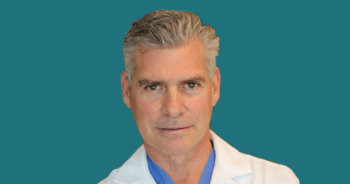
Dr. Geoff Bellingan: The Future for Multi-Stem Cell Therapy
Previous analyses into MultiStem Cell Therapy have shown benefits and safety in stroke patients. What will it take for the therapy to reach a phase 3 trial for ARDS?
In an interview with MD Magazine® while at the
MD Mag: What is the current state of stem cell therapy in ARDS care?
Bellingan: At least 4 next steps: we've got to look at our 90-day, 180-day, 365-day outcomes. We also have quality of life outcomes. Crucially, we've got a whole lot of inflammatory mediators. So that should start to tell us exactly what the mechanism is here. We know that the stem cells get into the lungs, they last for 3 or 4 days, and then they themselves will die. But it's that time when their lungs changing the milieu. So, is it regeneration, is it anti-inflammatory, is it an M1-M2 change, is it all of those?
So, we will be analyzing our mediators a lot, and looking at how long-lived this impact on the lungs are. In Japan, a company called Helius are sponsoring a similar study, and that's just started. So that will be important for us, and at the end of all that wrapping that together, we'll be looking at what that means for a phase 3 trial. And it'll probably be one—it may be a phase 2, may be a phase 2/3, or a phase 3. We'll have to see. And it'll probably be across several countries and a number of centers.
Within regard to pulmonary care, how much of MultiStem Cell Therapy’s development is breaking new ground?
Each group is standing on the shoulders of the group that went before. Michael Matthay, MD has done some brilliant work looking at the first set of safety data—coming out in The Lancet Respiratory—looking at stem cells in lung injury. Again, it was very early, and in looking at 28-day (results). Now, he has a slightly different population of stem cells there that used them a different way.
So we’re the next group that's come along, and the MultiStem product, from Athersys, is a product that's also been used in stroke. And indeed, they got a phase 3 study in stroke. Their study in stroke showed really exciting data. They've taken that on to phase 3.
And what's very interesting is the early indicators on our study is the change and the improvements, and inflammatory mediators that we've seen from the cells in ARDS, mirror exactly what we've seen in the MASTERS study. So it does look like the stem-cell product that Athersys have has a consistent impact on patients.
There's another group in Northern Ireland and the UK led by Danny McAuley. He's launched the REALIST study, and that's ongoing. We'll be using a different product, a different type of stem cell, but looking into ARDS. I think what we've got is all of us working closely together, all of us standing on the shoulders of each other, to get to a place where we can then start to do the large work that's needed. There'll be definite differences—from the type of stem cell, differences from the way we construct our patient inclusion, and exclusion. There's always an element of luck, but the main thing is to get the science right.
Newsletter
Stay at the forefront of cutting-edge science with CGT—your direct line to expert insights, breakthrough data, and real-time coverage of the latest advancements in cell and gene therapy.











































